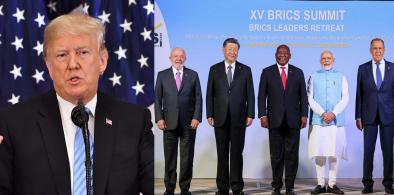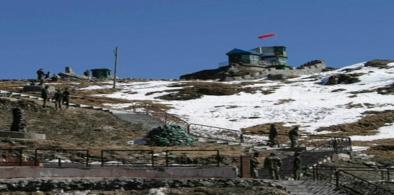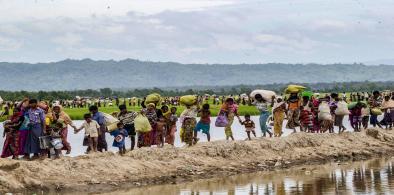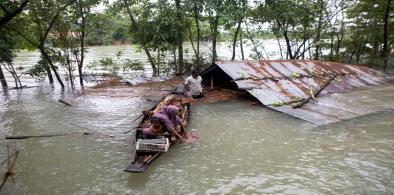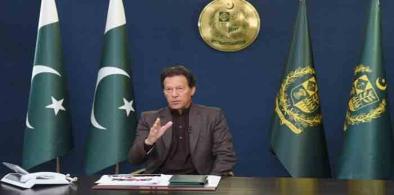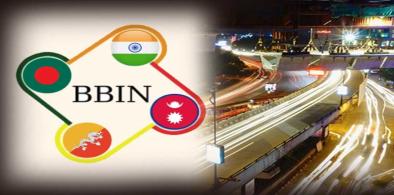The visit by the Indian Army chief to Bhutan in the backdrop of China’s territorial advances in Bhutan and India have brought into focus China’s future intentions, writes Lt Gen P. C. Katoch (retd) for South Asia Monitor
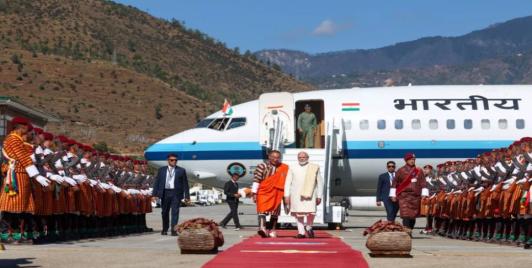
India-Bhutan Relationship Offers A Constructive Model For South Asia And A Peaceful Himalayan Region
Beyond India–Bhutan relations, the visit conveys a wider message to South Asia: cooperation grounded in respect, development, and stability remains essential in an uncertain global environment. As the region evolves, India appears to recognize the importance of maintaining strong partnerships without pressuring smaller neighbors or escalating strategic competition.
Red Fort Blast: India Facing A New Form Of Jihad?
The involvement of four doctors, one of whom allegedly executed the Red Fort blast, indicates a model that blends 'inspired' radicalisation with limited external facilitation. Interactions with certain outfits, Kashmiri terror commanders, and external handlers—if confirmed—point to an infrastructure that encourages attacks while maintaining plausible deniability.
The Nuclear Reckoning: Moment Of Awakening For India
It is time for India, along with like-minded nations across Asia, Africa, and Latin America, to articulate a shared agenda of non-alignment 2.0, not as a posture of neutrality but as a strategy of autonomy. The original Non-Aligned Movement (NAM) emerged from the Cold War’s bipolar tension; its modern counterpart must respond to multipolar volatility.
Endangered Indigenous Languages of South Asia: With Dominant Languages Replacing Mother Tongue, Are They Doomed To Die?
The world over, as is evident from the Atlas of endangered languages, there is a thrust of the dominant languages taking a precedence and most of the endangered languages are likely to disappear by 2100. Soon, possibly in the near future, the grand and great grand-children of the present generation may not be able to tell the story of their own mother tongue. Some of these languages will be lost forever and will only be limited to the pages of gazetteers and history books.
Why India should reconsider its ties with Russia
But even if we put the moral aspect aside and try to be pragmatic, to regard Russia as a future strategic partner is also wrong. It will not bring any benefit - economic or military – to India, write Prof (Dr) Vesselin Popovski, Prof Abhinav Mehrotra and Surabhi Bhandari for South Asia Monitor
Will ICJ ruling open the door to Rohingyas' return to Myanmar?
By holding the military accountable for its atrocities against the Rohingya, the ICJ might create the incentive for further international action to ensure justice for all victims of Myanmar’s security forces, writes Dr Arpita Hazarika for South Asia Monitor
Myanmar’s executions: A people let down by the world
The recent executions are an attempt to terrorize the people to move away from that path of dissidence and political activism, writes Sreeradha Datta for South Asia Monitor
Population as a democratic dividend: Skill training at international levels is key to India securing its citizen’s future
High quality STEM education will enable India to lead the world in the evolving technological and knowledge-based economy, writes Amb Sarvajit Chakravarti (retd) for South Asia Monitor
Indian Army chief’s Dhaka visit: Bilateral security and strategic ties are set to get stronger
India-Bangladesh bonhomie on the security front has reached newer heights. Their strategic relations will continue to add more depth and momentum, writes Kamal Uddin Mazumder for South Asia Monitor
Uphill tasks for Sri Lanka’s two new leaders: Political and economic reforms an imperative
The people have determined that a new political order is required because of the negative experiences from the past, where the legislative and executive powers opposed each other, resulting in instability, writes Sugeeswara Senadhira for South Asia Monitor
Connectivity as a new paradigm in India-Bangladesh relations: Enhanced opportunities and challenges
Keeping in mind the economic progress of Bangladesh, it can be said that besides the construction of the Padma Bridge, the new communication system being developed between the two countries will further strengthen their bonds, writes Tapan Das for South Asia Monitor
Why Bangladesh is unlikely to face a debt crisis like Sri Lanka
Bangladesh has already taken cautionary measures to not be a loan defaulter to avoid a Sri Lanka like situation, writes Sufian Siddique for South Asia Monitor
Devastating floods in northeast India and Bangladesh: Governments must have action plans resilient to climate change
Floods in the Brahmaputra basin in Assam and downstream Bangladesh are common every year, especially during the June-September monsoon that brings South Asia most of its annual rainfall
National emblem: What is the image that a modern India wants to project?
It must be noted that tolerance, acceptability and confidence form a nation’s basic tenets. Aggression, violence and intolerance stall its progress and development, write Abhinav Mehrotra and Dr Biswanath Gupta for South Asia Monitor
Imran Khan's stunning victory will have wider implications for Pakistan and beyond
Although the results will change the government in Punjab, a politically important province of 110 million people, its implications may not be limited to the province, writes Shraddha Nand Bhatnagar for South Asia Monitor
How renewable energy partnership can boost Bhutanese, BBIN economy
India can also help Bhutan to realize its green goals by promoting hybrid CNG/electric powered passenger and goods transport vehicles. These vehicles may be based at an EV park at Phuntsholing. Goods received there after customs clearance can then be distributed by Bhutan's own transport systems, employing their own nationals as drivers, helpers, mechanics and loaders, writes Amb Sarvajit Chakravarti (retd) for South Asia Monitor
Lessons from Sri Lanka for autocratic regimes
What can we learn from Sri Lanka's disastrous style of ruling, intensification of sectarian divides, marginalization of minorities and power concentrated in autocrats is there for all to see, writes Dr Ram Puniyani for South Asia Monitor
Diversity as soft power: India’s cultural diplomacy should spread message of its inclusive democracy
India also no longer capitalizes adequately upon her best known international icons such as Mahatma Gandhi, writes Amb Sarvajit Chakravarti (retd) for South Asia Monitor




